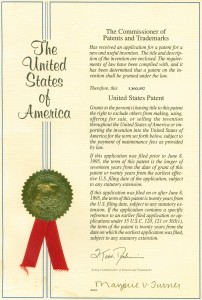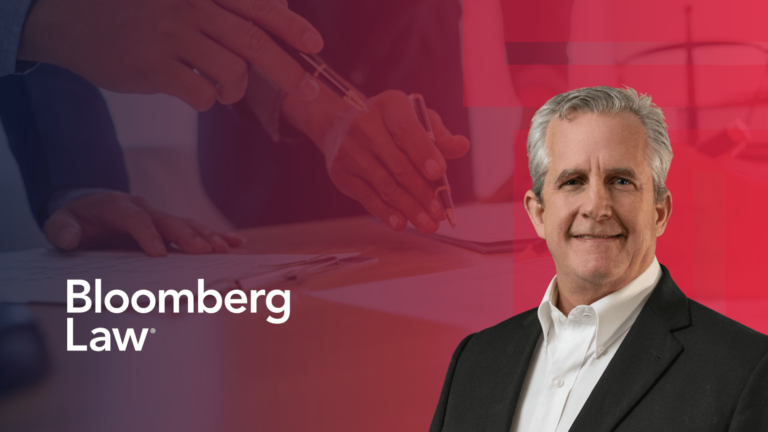What types of patents are available?
- Utility Patents protect the functional aspects of a process, machine, or product.
- Design Patents protect the ornamental features of a product. The functional aspects of a product are not protected by a design patent.
- Plant Patents protect distinct and new varieties of plants that are either invented or discovered and reproduced.
Why should I keep my invention a secret?
- Secrecy is important for two reasons. (1) In the U.S., you must file a patent application within one year after the first non-confidential disclosure of the invention – which includes offers to sell, sales, and public uses (including most experimental uses). (2) Patent rights in foreign countries are not available for inventions that have been disclosed (without confidentiality) or used in public.
- If you must tell someone about the invention, then you should get a written agreement signed first. The most effective agreements are mutual, such as a Mutual Confidentiality and Non-Disclosure Agreement, in which both parties agree to keep secret the other party’s information a secret.
Who gets superior patent rights?
- The first inventor to file a patent application gets superior rights to the invention that is disclosed in the application.
- Note that the applicant for a patent must be the inventor.
A patent gives me the right to practice my invention, right?
- A patent does not give you the right to practice the invention. You can practice your invention without a patent, as long as doing so does not infringe the rights of other patent owners.
- An issued patent gives you the right to exclude others from making, using, selling, offering to sell, or importing into the U.S. a product that is identical or similar to your invention.
What are the best ways to identify inventions that are potentially patentable?
- Most patentable inventions are conceived and developed by people who solve problems. If a problem arises on a project, and someone finds a solution that is (1) useful, (2) new, and (3) not obvious to others in the field, then that solution should be analyzed to see if it is patentable.
- Educate the people in your organization who are engaged in research, development, and other problem-solving tasks.
- Use a comprehensive Invention Disclosure Form (IDF), to capture and document potentially patentable solutions when they occur. Each IDF should be studied by a patent attorney of committee.
- For important solutions, the IDF should be reviewed immediately.
- For difficult solutions that require more time, file a Provisional Application for Patent immediately, and then review the IDF more thoroughly.
- For Provisional Applications, act quickly, file often, and be thorough. New matter added later does not get the benefit of the early filing date.
- Make certain the technology is patent-pending before any publication, public use, offer for sale, or public display. Closely monitor all planned publications (magazine articles, white papers, journal submissions, presentations, and the like) and public disclosures (at trade shows, non-confidential client presentations, and in marketing and advertising materials).
How do you apply for a Utility Patent?
- Non-Provisional Application. Filing a non-provisional application starts the examination process.
- Provisional Application. Filing a provisional application is another way to secure immediate patent-pending status, without starting the examination process.
- Benefits
- “Patent Pending” status immediately upon filing.
- Because fewer formalities are required, a provisional application can be written and filed quickly.
- Near-Term Cost is less than filing a non-provisional application.
- One Year for Business Development. The provisional application lasts for one year, during which the inventors can promote the invention, seek inventors or partners, and finalize the development of the product.
- Preserves foreign rights, as long as the invention was not disclosed or used in public before the provisional was filed.
- Risks and Drawbacks
- The provisional only remains pending for one year. Before the one-year deadline expires, the inventors must file a non-provisional application (and any foreign applications).
- The disclosure in the provisional must be complete. Every aspect of the invention – including all the features and functions – must be fully described in the specification (and any exhibits). If a feature is omitted, then it will not get the benefit of the early filing date of the provisional application.
- The provisional is not examined. The USPTO will not conduct a search or give any feedback to the inventors about the invention.
- Keep in mind: There is no such thing as a “provisional patent.”
- Benefits
For a utility patent, what types of inventions may be patented?
- The invention must fall within one of these four statutory categories:
- Process
- Machine
- Article of Manufacture
- Composition of Matter
- The following types of subject matter are not patentable:
- Laws of Nature
- Natural Phenomena
- Abstract Ideas including:
- mathematical algorithms,
- transitory things like signals, and
- computer systems or software, if described in claims that recite nothing more than the abstract idea itself.
If my invention falls within the allowed categories, what is required to get a patent issued?
- To be patentable, the invention must be (1) useful, (2) new, and (3) not obvious to someone of ordinary skill in the field of the invention at the time of the invention.
What if my patent application is rejected?
- Nearly all patent applications are rejected, at least once.
- After a rejection, your patent attorney can schedule a telephone or in-person interview with the patent examiner. Also, the claims of the application can be amended, when necessary, to distinguish your invention from the previously published patents or applications cited against you by the patent examiner.
When do patent rights begin?
- Patent rights begin on the issue date.
- If the patent application is published, then the patent owner may recover damages for infringement, in the form of a reasonable royalty (only), for all activity between the date of actual notice of the publication and the issue date of the patent, but only if:
- the patent owner proves (after the patent issues) that the patent claims are infringed;
- the issued claims are ‘substantially identical’ to the claims, as published; and
- the infringer is given actual notice of the published application.
How long do patent rights last?
- Patent rights begin on the issue date and continue for 20 years from the filing date of the application.
- Legal action for patent infringement must be initiated within six (6) years of the infringing activity.
How long does it take to get a patent?
- USPTO Statistics, as of April 2015:
- 3 Months to First Action: The first official action taken by the Patent Office, on average, does not occur until 18.3 months after the filing date.
- 9 Months, Total Pendency: Patent applications remain pending for an average of 26.9 months (about 2 years, 5 months) from filing date to issue date.
- 585,811 applications are unexamined (backlog).
- 8,433 Patent Examiners are currently employed by the USPTO.
Can I request faster examination?
- Yes, for an additional fee of $4,000, you can request “Track One” expedited review of a patent application. The fee is reduced to $2,000 for a Small Entity (fewer than 500 employees), and to $1,000 if you qualify as a Micro Entity.
- The application must have fewer than 30 total claims, including no more than 4 independent claims.
- The USPTO goal is to provide a final decision within 12 months of filing.
Where did Congress get authority to create the patent system?
- U. S. Constitution, Article I, Section 8: “The Congress shall have the power … To promote the progress of science and useful arts, by securing for limited times to authors and inventors the exclusive right to their respective writings and discoveries; …”
 Scott Anderson’s practice is devoted to helping clients identify, protect, and generate value from their intellectual property rights. He has worked with leading innovators at global Fortune 100 companies, major research universities, and high-tech startups, all of whom recognize that intellectual property represents a valuable and powerful intangible asset for businesses today.
Scott Anderson’s practice is devoted to helping clients identify, protect, and generate value from their intellectual property rights. He has worked with leading innovators at global Fortune 100 companies, major research universities, and high-tech startups, all of whom recognize that intellectual property represents a valuable and powerful intangible asset for businesses today.




